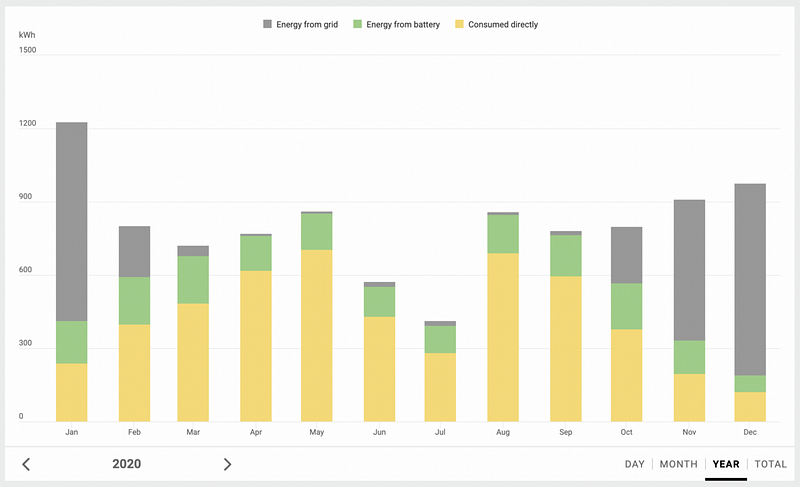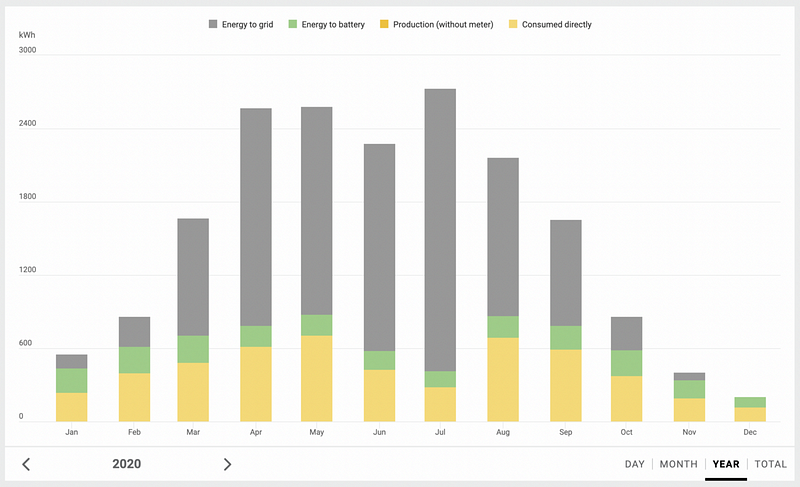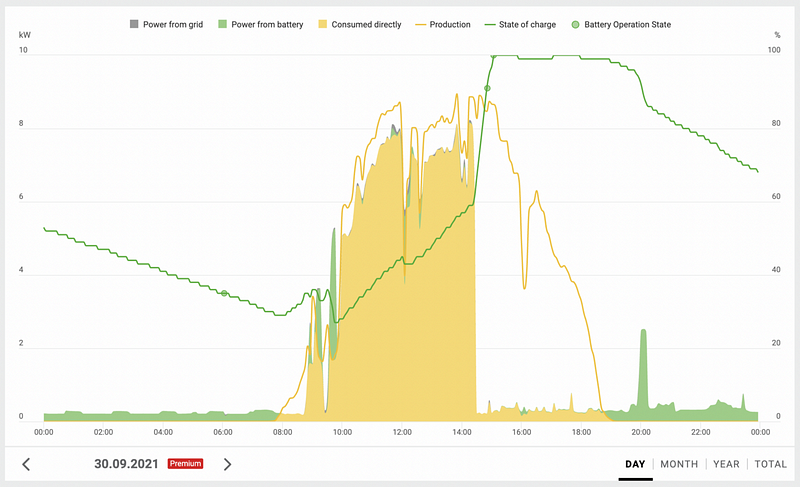Achieving Solar Self-Sufficiency in Moderate Climates
Written on
Chapter 1: The Importance of Self-Sufficiency
In 2021, Switzerland's electricity consumption totaled 58 billion kWh, with private households accounting for approximately 33% and transportation (mainly rail systems) making up about 8%. Addressing climate change and enhancing renewable energy cannot be achieved through a single action; however, focusing on residential energy usage—responsible for a significant portion of total electricity consumption—makes a compelling case for self-sufficiency.
Decentralized renewable energy generation provides an additional layer of security against power outages, which have become more frequent during heatwaves, even in cooler climates like Switzerland.
Section 1.1: My Solar Energy Setup
In this article, I will detail the solar energy system installed in my home. While I acknowledge that my home alone won't solve global energy issues, it can serve as an example for future advancements.
After constructing our house on a green field in 2012 with an emphasis on energy efficiency, we integrated a Drexel+Weiss Aerosmart X2 combined heating and ventilation system alongside a ground heat pump. This setup has enabled us to maintain low energy consumption, even during harsh winters, with the heating system's peak consumption around 1.2 kW.
Over the years, we have gradually enhanced our energy systems, which now include:
- 8 kWp east-west solar panels on the carport
- 14 kWp east-west solar panels on the house
- A 12 kWh Fronius solar battery
- Two Tesla Model 3s, each with a 75 kWh battery
A Loxone building control system manages our significant power users (such as vehicles and appliances), optimizing energy use based on solar power availability and battery levels.
Section 1.2: Annual Self-Sufficiency Metrics
Since 2017, we have achieved impressive self-sufficiency rates. Our average self-sufficiency has consistently exceeded 70% annually, even with two electric vehicles.
Focusing on monthly data from 2020, we recorded nearly 100% self-sufficiency from mid-February to mid-October. However, fluctuations were common during transitional periods like late February and early October, influenced by varying weather conditions.
In contrast, the winter months (from mid-October to mid-February) typically yielded only 20-30% self-sufficiency, largely dependent on weather and temperature.

To delve deeper, we must consider the surplus energy generated during the summer months. During 2020, the graphic below illustrates our energy surplus, which can be fed back into the grid, allowing us to sell it to local utilities.

Section 1.3: The Building Control System
In today's on-demand culture, it's easy to forget the benefits of moderating energy usage. A building control system allows for efficient management of energy consumption by adjusting the operation of significant power users based on real-time solar production and battery charge levels.
For example, on September 30, 2021, our building control system prioritized charging our home battery over charging our vehicles, ensuring we had enough energy for nighttime needs.

Section 1.4: Recent Upgrades
As our building control system continues to improve, so too does our overall energy framework. In late 2021, we replaced our Tesla Model X and S with two Model 3s, primarily for their enhanced energy efficiency. This switch reduced our electricity consumption in Q1 2022 by around 400 kWh, raising our self-sufficiency in that quarter from 51% to 66%.
Chapter 2: Future Enhancements
The long, dark winters in Switzerland pose challenges for solar self-sufficiency, particularly when snow covers solar panels. To address this, I plan to install vertical solar panels on certain parts of our facade this fall, adding 4.9 kWp of capacity. This installation is projected to generate an additional 2,500 kWh annually, even during winter months.
Wind power can complement solar energy. Although community regulations currently prevent us from installing small residential wind turbines, I see the potential for such solutions to enhance our energy independence.
Although our setup may not single-handedly solve global challenges, it can inspire further innovations. New homes can be powered with minimal energy using today's building technologies. However, retrofitting older homes will necessitate larger solar installations for similar self-sufficiency outcomes. To achieve this, local and national policies must support the modernization of existing buildings.
Moreover, with the growing number of residents in large complexes, the ability to charge multiple electric vehicles using solar power will require seasonal energy storage solutions. Current efficiencies for such systems remain low, which suggests that community-level implementations may be more effective than individual efforts.
Ultimately, my passion for engineering drives me to contribute to solutions for our world's pressing issues. We must cultivate a new generation of engineers and scientists, as they are key to unlocking future technological advancements.
Further Reading
- Solar Self-Sufficiency: Optimizing Winter Car Charging Patterns for Geopolitics
- Solar Self-Sufficiency: The Dollars Behind
- Growing a Company in Troubled Times: Practical Advice for Entrepreneurs
The first video, "Impacts of Rooftop Solar on Household Energy Burden," discusses how rooftop solar systems can alleviate energy costs for households.
The second video, "Is Solar Energy Effective in All Climates?" explores the viability of solar energy across various climatic conditions.